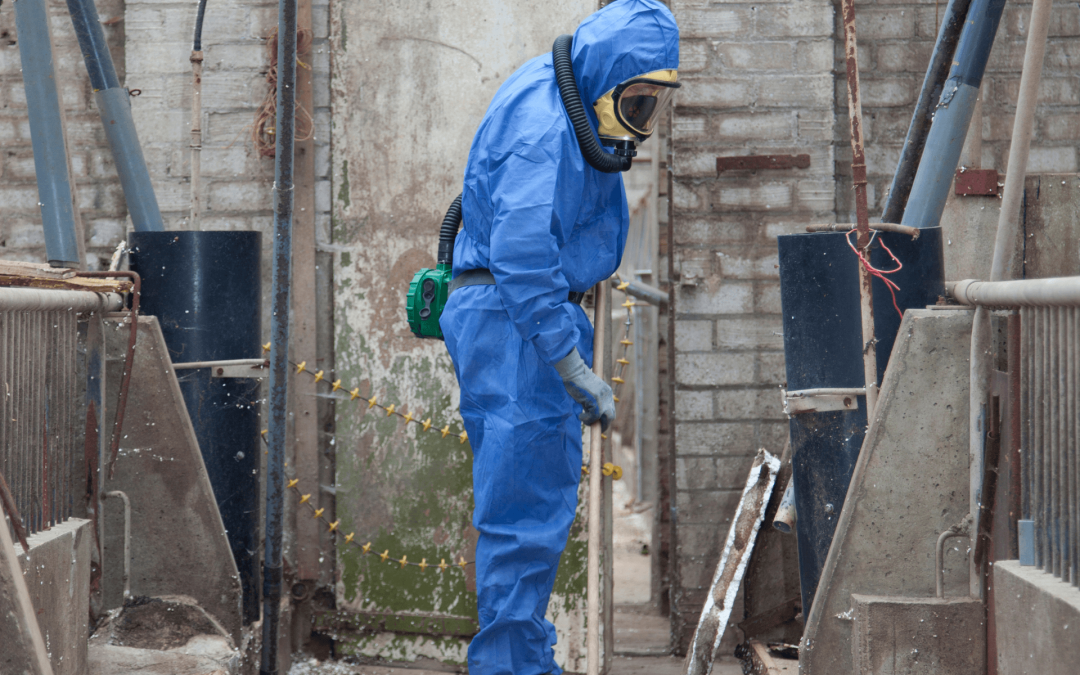In the 1980s, Australia had one of the highest rates of asbestos per capita in the world. Even today, it is estimated that asbestos is found in 1 in 3 Australian homes. Not only can this material be highly detrimental to physical well-being, but it can also go undetected for years or decades – making it a silent threat to your entire family’s health.
Fortunately, there is a lot that you can do to determine whether your home contains asbestos and create a healthier living space for your whole family. And it all starts with investing in an asbestos testing kit. Let’s cover all you need to know below.
The First Step Towards A Safer Home: Understanding Asbestos Testing Kits
Asbestos testing and sampling kits are a collection of PPE (personal protective equipment) items – or tools and materials designed for safely collecting samples of materials from your home or office suspected to contain asbestos. After collection, the samples are packaged using the provided packaging and then sent to a specialised and certified laboratory. Here, the fibre cement is tested to determine whether it contains asbestos and, if so, in which concentrations. Once you have the results at hand, you’ll gain crucial insights into potential health risks, and you’ll be able to determine whether you need the help of an expert asbestos removalist. Ultimately, if you suspect that your home contains asbestos, investing in a testing kit is a crucial step to take towards a safer home.
Testing Your Home For Asbestos: Diy Or Call The Pros?
Asbestos testing kits come with all the necessary materials to collect and package the samples so that they can be analysed by a team of experts. However, collecting your own asbestos samples isn’t recommended.
Indeed, by carrying out DIY asbestos sample testing you’ll run risks that should not be overlooked. When collecting samples from your home’s walls or roof, you may come into contact with harmful asbestos fibres. Even more dangerous is the fact that asbestos fibres may be released into the air or onto yourself during the process, aggravating the picture.
Ultimately, if you suspect that there is asbestos-containing material in your home and you are planning a renovation, you should always get started by calling expert asbestos removalists.
The Importance Of Home Asbestos Testing
Asbestos testing can be carried out at any time, but this step is highly recommended before a renovation or when planning structural upgrades to your home. To understand this, let’s recap what asbestos is and what are the main asbestos problems.
Asbestos is a naturally occurring mineral, recognized for its heat resistance and durability. These properties made it a popular construction material between the 1930s and the early 2000s when it became banned due to its potentially harmful impact on health.
When disturbed, asbestos fibres can be released into the air. Once inhaled, these microscopic fibres can begin to accumulate in the lungs, potentially causing severe health issues, including lung cancer, chronic respiratory disorders, and mesothelioma.
Should You Test Your Home For Asbestos?
If you suspect that your property contains asbestos, you can get the peace of mind that your home is safe for your family by investing in an asbestos sample testing kit. In any case, you should not skip asbestos testing if:
- You are planning a renovation or structural upgrade
- Your home was built or renovated before 1990
The Australian government banned the use and sale of asbestos in 2003. Homes, vehicles, and business facilities built before this date are likely to contain asbestos.
Spotting Asbestos At Home: Common Signs Of Asbestos-Containing Materials
Besides your home’s construction date, you can spot other signs that your home contains asbestos. These include:
- Textured coatings like popcorn ceilings or textured paints.
- Vinyl floor tiles – especially if 9×9 inches in size
- Corrugated or chalky insulation around older pipes
- Cement sheets, which are found in siding or as underlay in floors
- Roof tiles with a white or grey colouring
- You find a record for your home or commercial property in the Asbestos Registers of properties built between 2004.
Spotting asbestos in a home isn’t easy, also because this material can appear in several colours and shapes. Due to its high versatility, it was also used as a construction material for several parts of the house, including bathrooms, floor underlies, and roofing.
Given this, if you suspect that your home or building may contain asbestos or that a certain material is asbestos-based, go with your assumption and seek the expert of a specialist.
Your Home Tested Positive For Asbestos. What’s The Next Step?
Generally, material that is in good condition and won’t be disturbed during renovations or remodelling should be left as it is. However, if your home tested positive for asbestos and you are looking to affect the walls, roofing, or floors containing asbestos, you should proceed with a specialised asbestos demolition. For this, you’ll need to work with a trusted contractor who specialises in testing, handling, and removing harmful substances from your home.
Getting Help From A Specialist: Reach Out To The About The House Team
Testing for asbestos in your home or removing this material should never be a DIY process due to the health and safety risks involved. That is why, before you go smashing through that wall, you should get in touch with the team of experienced removalists at About The House. Our experts will take care of everything – from asbestos testing to demolition and removal – so that you can protect your family and regain your peace of mind.
Get started by visiting this page or getting in touch with our team at 0414 012 747.
